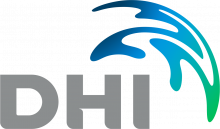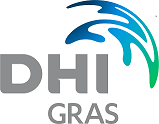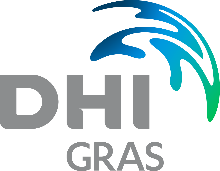
Objectives of the service
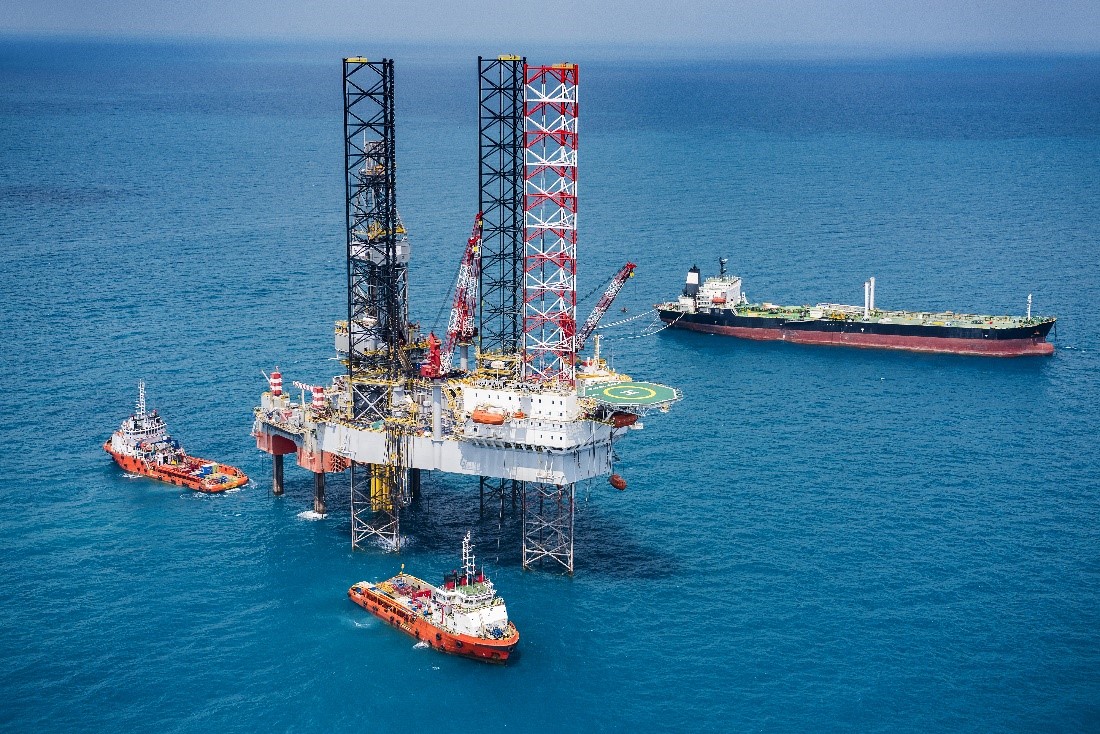
The decommissioning of energy assets entails a chain of complex decisions on environmental impact risks, logistics and worker safety. Operations are strongly affected by several environmental influences such as tides, currents, waves, winds, sea temperature and salinity. Today’s decision-making is typically based on metocean data analyses, assessing for example how many days in a given months or looking a week ahead that the significant wave height is less than a certain threshold. Actual decision drivers, such as heavy lift vessel motions, drag on an underwater ROV by currents, scour holes around the legs of jack-up vessels, are not directly addressed. This approach leads to either unnecessary conservativism or risk underestimation. Cost-efficiency is thus sub-optimal.
DHI MOOD Decom will help decommissioning industry and operators in Oil & Gas and Offshore Wind with:
- High-quality metocean information with quantified uncertainties
- Integration of metocean data with probabilistic measures of workability
- Near-real-time environmental variables for impact monitoring
The high quality of metocean data (forecast and hindcast) will be obtained by assimilation and fusion of satellite data into state-of-the-art oceanographic models.
Accuracy of metocean information and the translation into practical risk measures will be the keys for more trustworthy workability assessments, enabling more cost-effective, safer and compliant operations.
Information on the emergence of e.g. oil spills and sediment plumes will be derived from satellite data.
Users and their needs
MOOD Decom will target two user groups, i.e., consultants and contractors, operating in decommissioning of Oil &Gas and Offshore Wind assets in the North Sea. Consultants support and advice energy asset owners during the tendering phase of a project and operations at sea on cost-estimation, planning optimization, and safety compliance. Contractors execute the operations, providing engineering, vessels and personnel.
From interviews with representatives from the two groups these main needs have been identified:
- Transparent information on weather-related workability for not-interruptible operations
- Maximize efficiency of planning for cost reduction
- Minimize risks related to worker safety and environmental impact
- Trustworthy cost estimation of weather-dependent operations
The main challenges to meet these needs are:
- Reluctancy of the industry to openly discuss business and technical critical information
- Deep-rooted conservativism in planning and execution of operations
- Convincing decision makers on the actual added value of MOOD Decom.
In the feasibility study we focus on the North Sea, but the services can be upscaled globally.
Service/ system concept
MOOD Decom will be an operational web cloud system providing high-quality metocean information for supporting decommissioning activities. Metocean data will be obtained by combining oceanographic modelling with near-real-time ingestion of satellite altimetry and scatterometer data, through assimilation and fusion techniques.
MOOD Decom will deliver the following products:
- EO-enriched metocean data as such, for direct use of customers (forecast and hindcast)
- EO-enriched metocean data integrated with probabilistic measures of actual workability
- Direct access to EO-monitoring of structures at sea in near-real-time
- Users will access the products through an intuitive and user-friendly Graphical User Interface which will offer agile workflows for ease and transparent use of the service.
MOOD Decom will be operational 24/7 as a service utilising scheduled processes for continuous ingestion and update of data from external data providers and continuous forecast model executions with extraction of forecast model results. Relevant data will be stored in the central data storage, which will be optimized for large datasets and fast query capabilities.
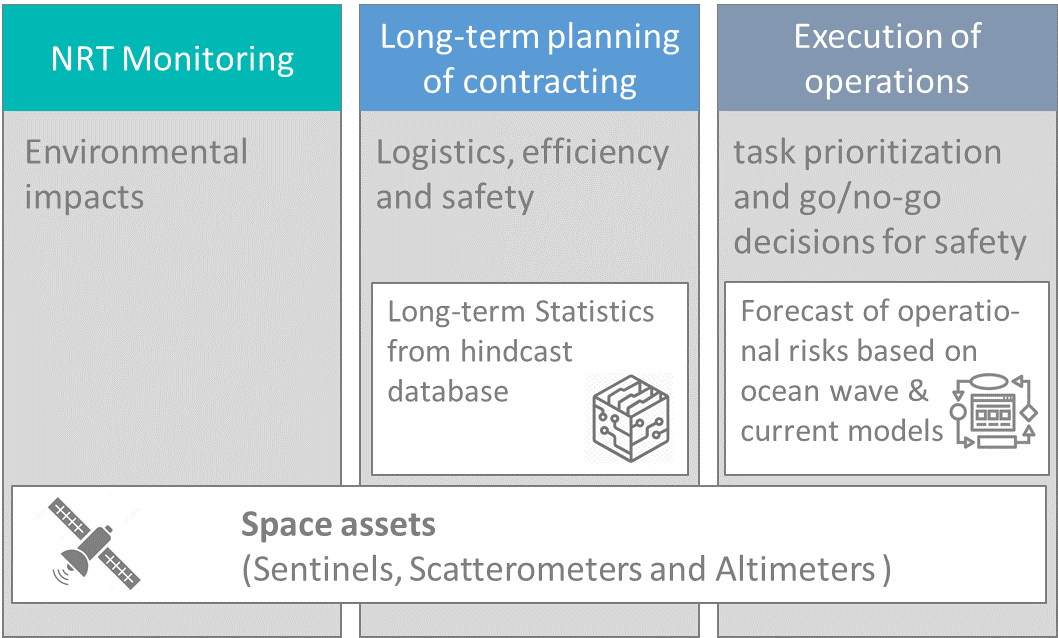
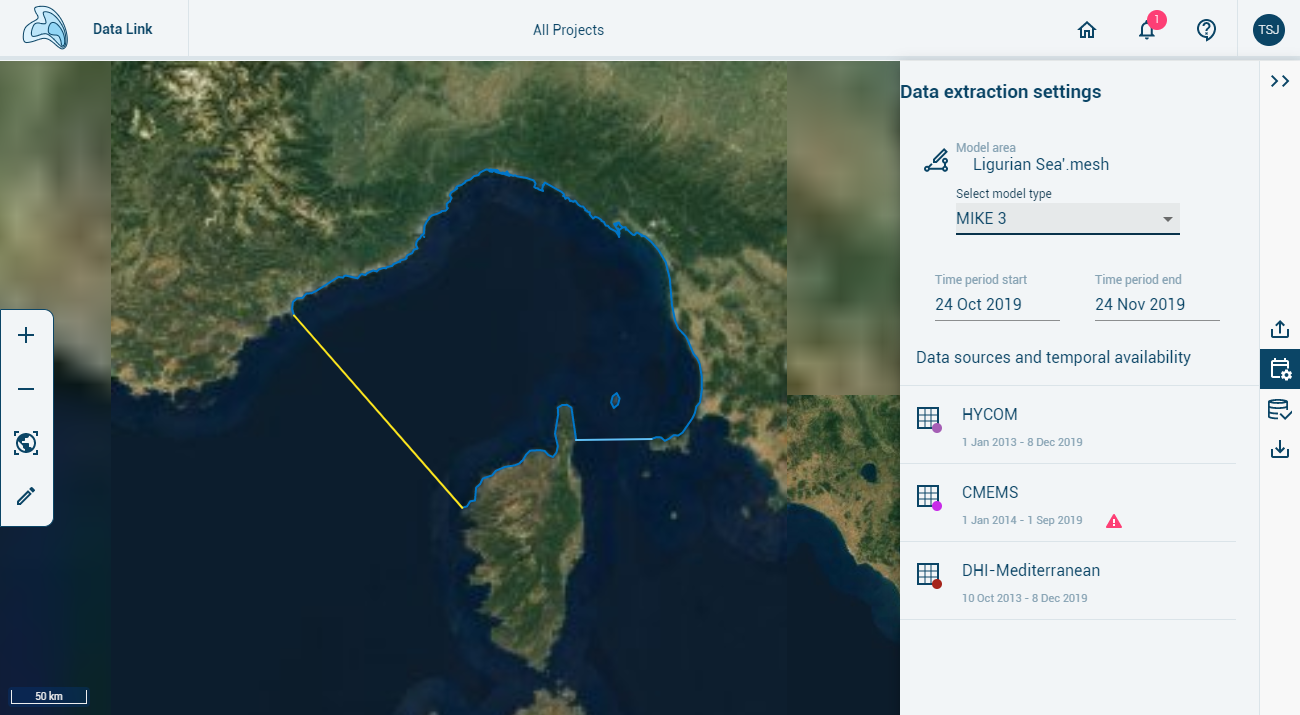
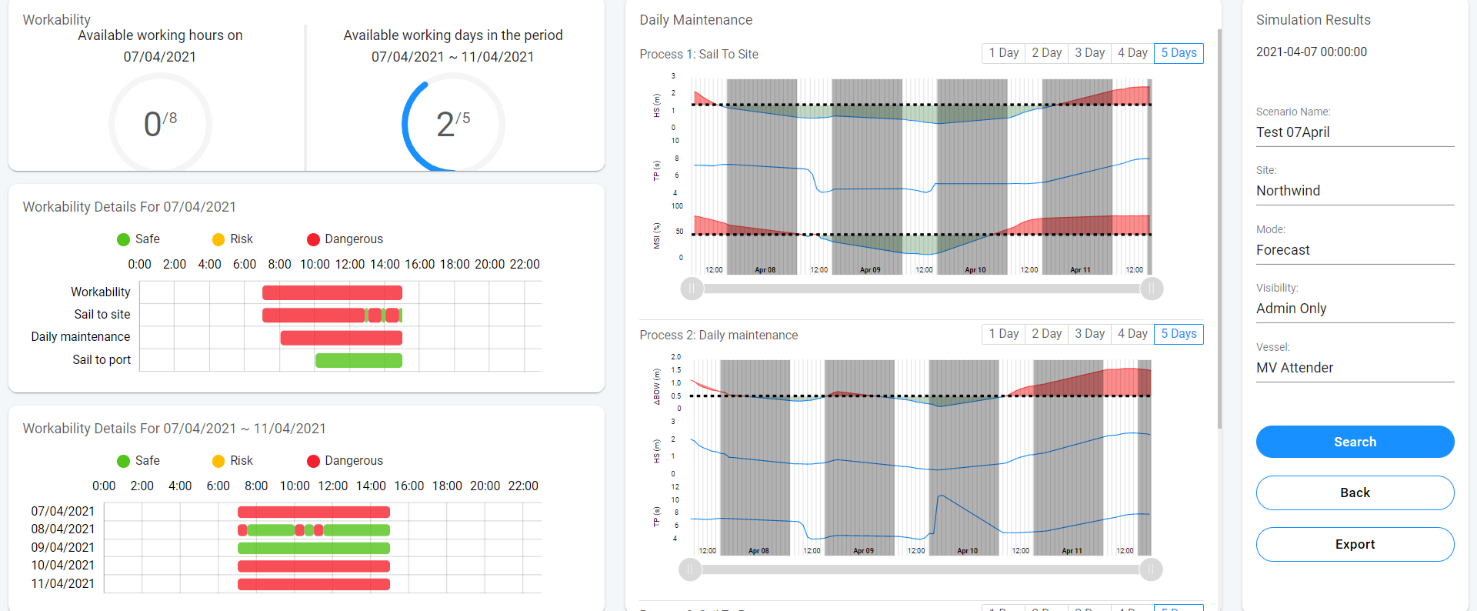
Space Added Value
The space assets involved in the proposed service are summarized in the figure below
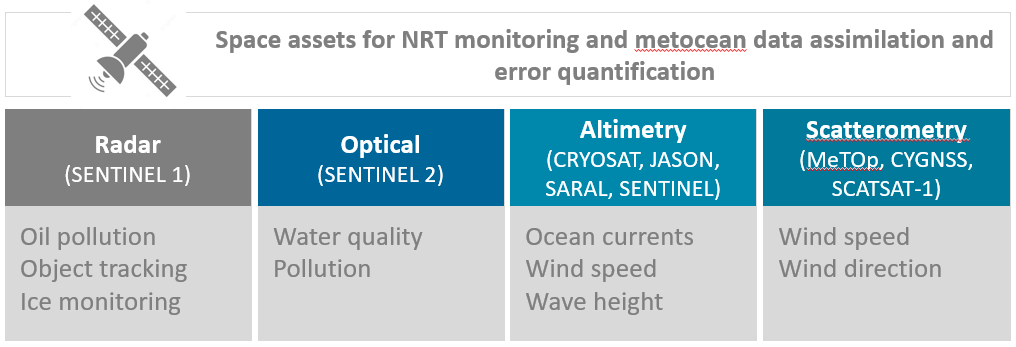
Data from Sentinel 1 will be used for monitoring extent and origin of pollution, e.g. thin films of floating oil. Optical Sentinel 2 data will be used for water quality monitoring, such as turbidity plumes. Furthermore, the succession plan of the Sentinels will guarantee the monitoring required in post-decommissioning.
ESA and NASA altimetry missions like Cryosat-2, Sentinel-3A/B and -6 and Jason-2 & -3 will be assimilated through the data portal to provide near real time ocean currents, wind speed and wave height. Scatterometer missions like ESA ASCAT on board the Metop fleet will be used to provide measurements of the wind direction and wind speed above the sea surface.
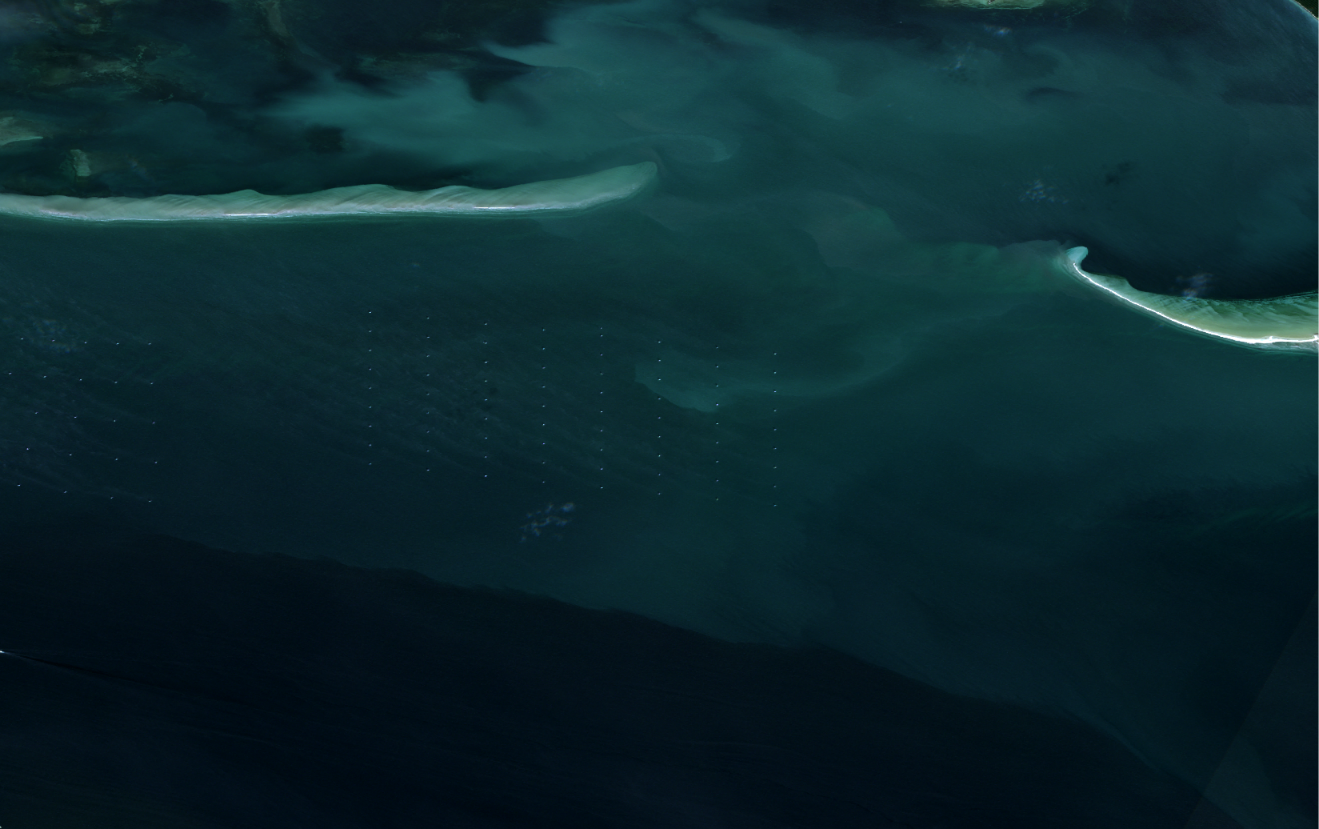
Added value
Dataflow/parameter extraction and quality control will be established, and the information will be assimilated into existing oceanographic information on i.e., wind, pressure and temperature used to drive the hydrographic forecasting models. The assimilation methods for EO data will be optimised throughout the project and two forecast models (existing) will run in parallel. Using two independent models is fundamental to enable us to establish error/reliability quantification of the service. The extensive validation of the new long-term modelled datasets is based on multiple buoys and satellite data (altimeters and scatterometers), securing accuracy and high quality.
Current Status
In January 2022, we have successfully concluded the MOOD Decom feasibility study with the following outcomes:
The stakeholder analysis confirmed that there is a general interest in MOOD Decom and indicated the potential users to address, consultants and contractors, which are involved directly in planning and executing the operations at sea. Nevertheless, the same analysis revealed that those users generally employ their own tools (in-house developed) for the same scopes MOOD Decom is meant to help. The commercial success of the proposed service will thus derive from an incisive demonstration of the value created for the users, through for example the quantification of time and/or cost savings in a practical case during the pilot stage.
The technical feasibility assessment of the service confirmed the strong initial position of DHI, since several technical components are already available in the consortium. In fact, DHI will largely benefit from other services comprised in the current company portfolio, which already use the ingestion of satellite data into oceanographic models and the implementation on a cloud-platform. The advantages will thus come from the savings in development costs, but also in maintenance costs, as these can be shared with the other services using common components.
The analysis further indicated that there is also a business case for MOOD Decom. Sales will be sustained by these unique selling points:
- providing global-local high-quality metocean data achieved by combining EO data and modelling techniques in a semi-automatic downscaling approach;
- providing a wide range of metocean parameters with quantitative assessment of quality sufficient reliability, and integrated with actual measures of workability;
- ensuring flexible, easy, and efficient access to the data, exactly where the information is needed in the workflow of the end-users.
The assimilation of EO-data to validate and improve the accuracy of metocean information will be a key differentiator for MOOD Decom compared to existing services. Furthermore, MOOD Decom will be distinguished from most competitors by developing excellence only on the relevant metocean data driven value creations, heightening the quality yet hiding the complexity of good metocean data for the users.
Based on the overall outcome of the conducted feasibility study, DHI recommends moving forward to the pilot demonstration stage for MOOD Decom. DHI itself is interested in following-up with the demonstration project for developing and testing the service. MOOD Decom fits well with DHI’s business portfolio, which is specialized in water modelling and data management software, branded under the name MIKE. The consortium is confident to have the necessary expertise on satellite data, metocean analyses and offshore engineering to build a successful service. Furthermore, DHI has already a strong presence as a provider of high-quality metocean services to developers, consultants, service providers, contractors, shipping companies and authorities.
Prime Contractor(s)
Subcontractor(s)
